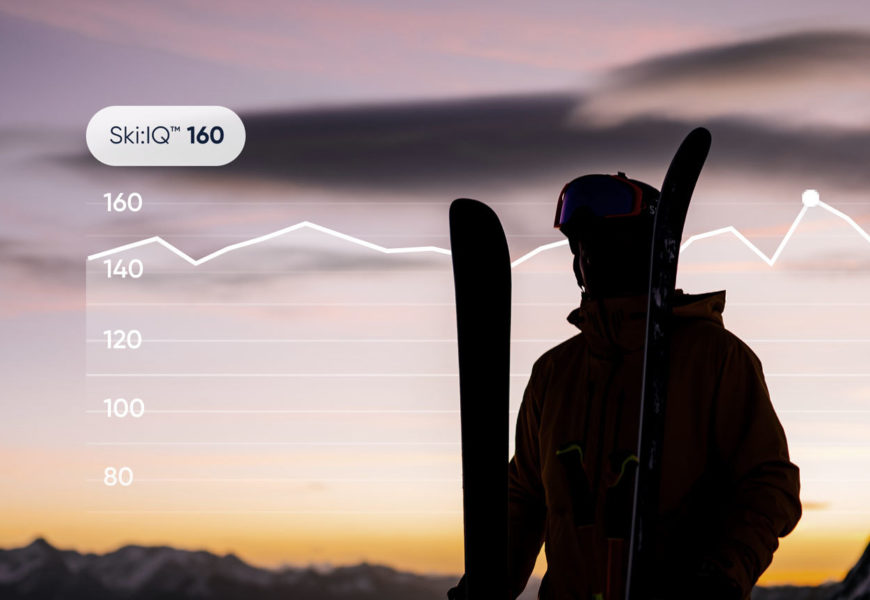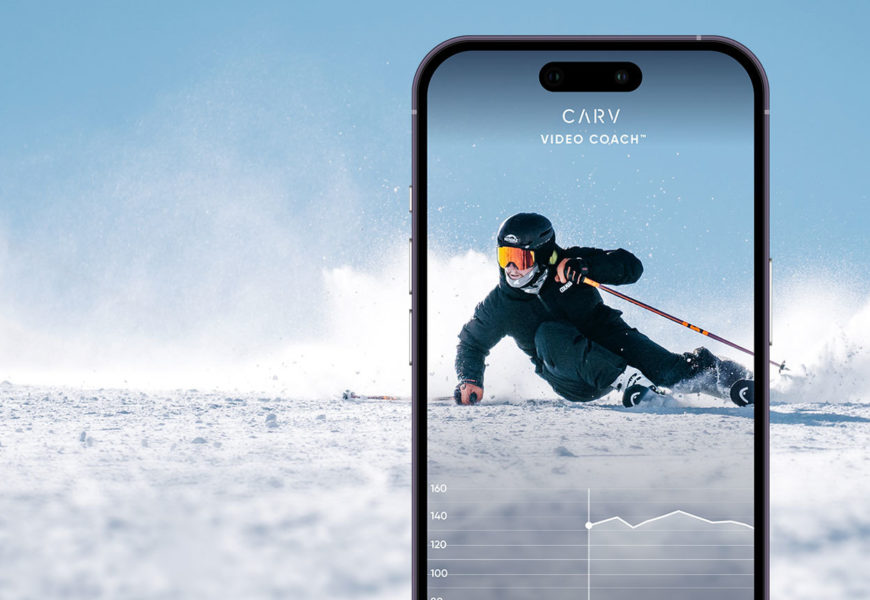Segmentation - make more of your favourite mode

Votes:
Here at Carv, we figured the best way to ring in the new year was with a change which we know has been hotly requested. It has been way up our priority list for a while now. We call it “segmentation”.
This release signifies a major milestone for the original Carv mode: Free Ski. Free Ski is by far the most popular mode, and at the end of last season, you told us that you wanted more from it. Particularly, more responsiveness as you skied on different sections of the run.
To give you the inside scoop on the new mode, I sat down with Dave, one of our Senior Product Managers, to find out why segmentation is a big step towards the ultimate Free Ski experience.
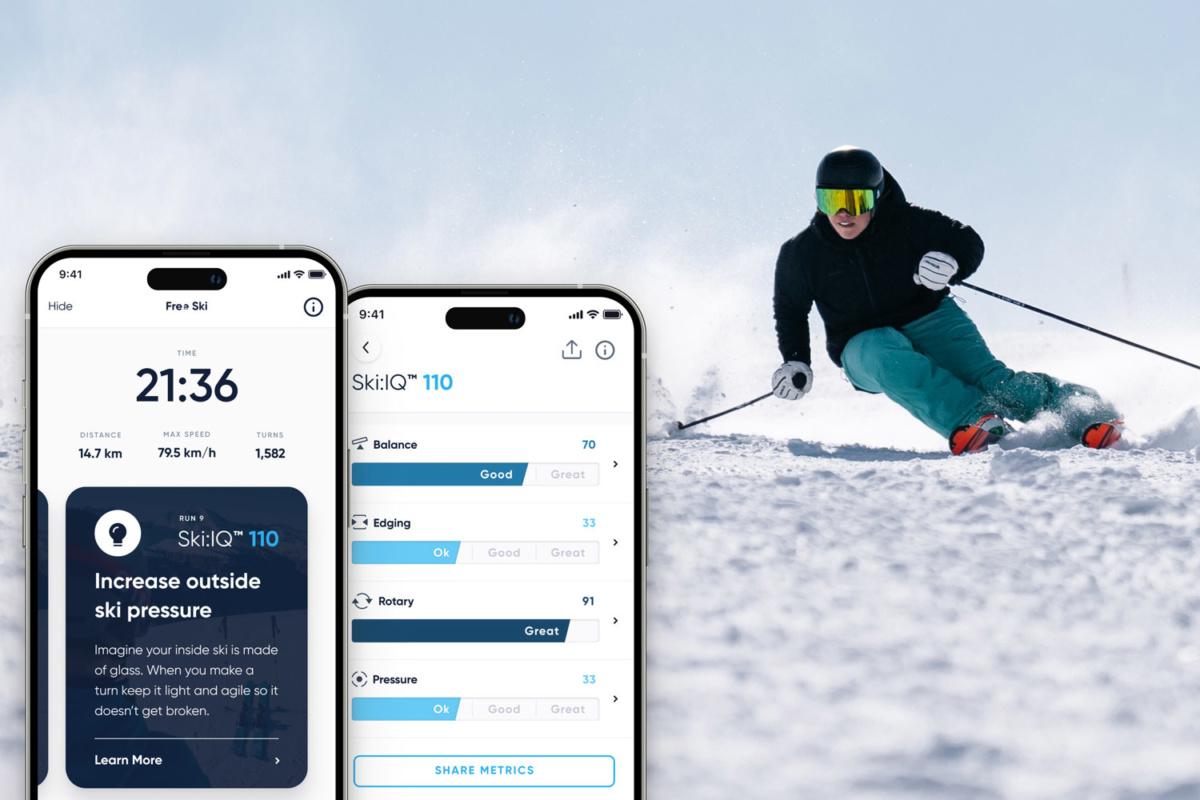
Free ski mode is Carv skiers' favourite mode. It gives you a Ski:IQ™ score and audio tip on every lift, and detailed tracking of your metrics for each run.
Amelia: So what is ‘Segmentation’?
Dave: We used to split your skiing up into runs, defined as skiing from lift to lift. We’re now splitting it into segments between when you start and stop skiing - regardless of where that may be.
This new feature is about showing Carv members smaller chunks of activity and scoring, as it’s likely you’ll now have a few segments on each run.
This change will make Ski:IQ much more powerful because it will now directly correspond to different parts of a run - making your feedback loop faster. We know from experience we’ll often ski a run pitch by pitch, stopping at each section - and so this is now how Carv will deliver your score.
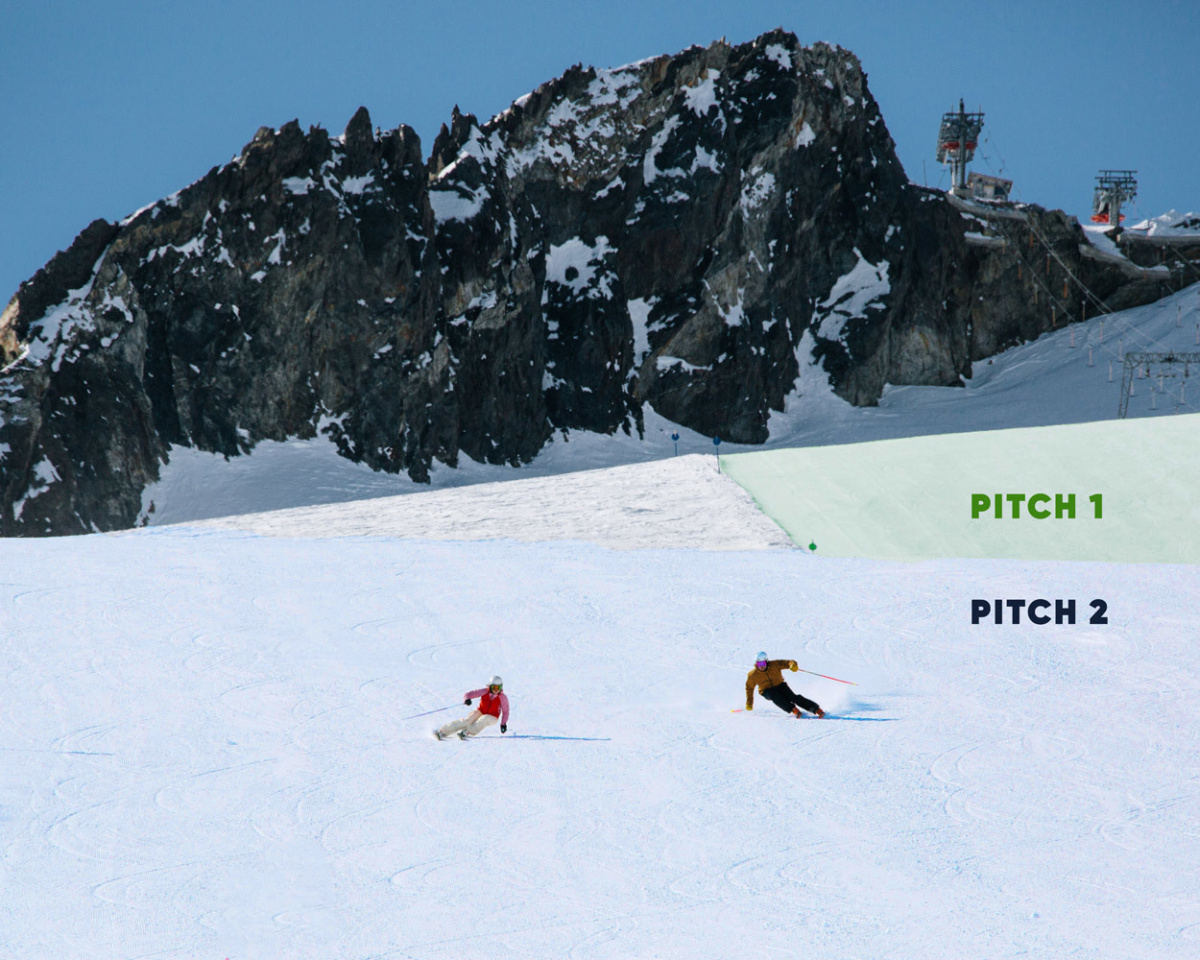
Most runs are made up of multiple 'pitches' of varying steepness
Amelia: What is it going to look like in the app? I’m heading back out to the slopes next week, and I didn’t actually get a chance to ski with it during testing.
Dave: Firstly, remember to update your app. Do this at home with wifi, as your data will need to be redownloaded and that could take some time. We’re reprocessing all of your old runs into segments, to give you those more granular insights.
When it has redownloaded, you may spot a change to your Ski:IQ! It will now be based on segments, and so it may have been altered. If you check out Recent Activity, you’ll see all of your previous runs broken into segments based on where you started and stopped on each run.
As for on the slopes, you’ll now have the choice to hear your Ski:IQ in your headphones whenever you stop for the segment you just skied.
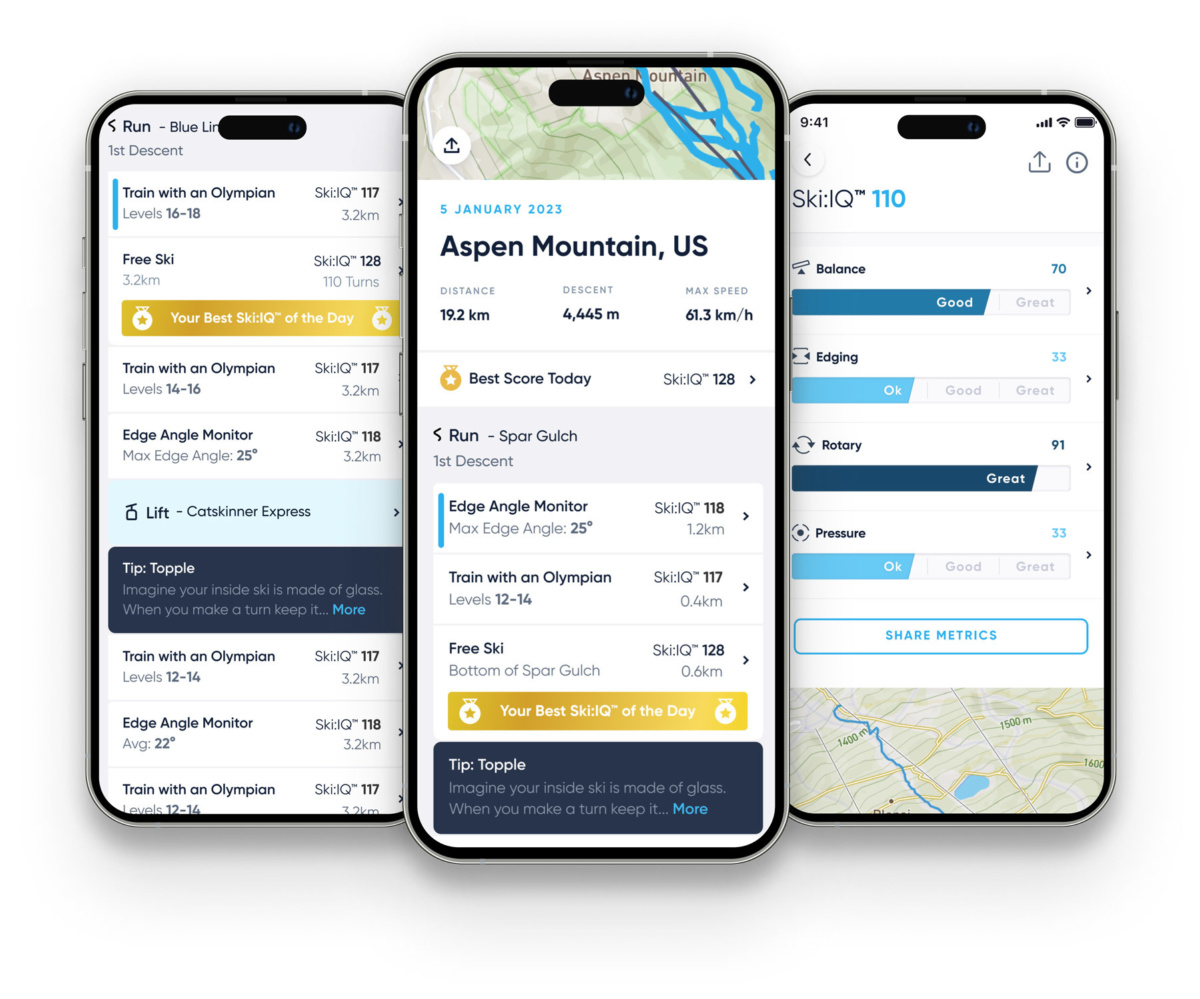
A: What’s the best thing about segmentation?
D: It puts your Carv experience more within your control. You decide when you start and stop, and therefore what your skiing is assessed on. Until now, this hasn’t been in your hands.
For users who use Free Ski most of the time, and want a low touch way of getting more feedback, this is going to be a very useful new tool.
A: Why did we decide to add “segments”?
D: This isn’t a simple answer, because it is in response to thousands of requests from members over the previous seasons as well as our wider ambitions for the most popular Carv mode! Our new features are largely built from requests, and this one rolls together many different perspectives with one fix.
We often heard last season that by the time you’ve gotten to the bottom of a run - which could include various cat tracks, bottle necks, or steeper sections - it’s hard to know how reflective your score is. You wanted your Ski:IQ and metric scores to be more contextualised, and so that’s what we gave you.
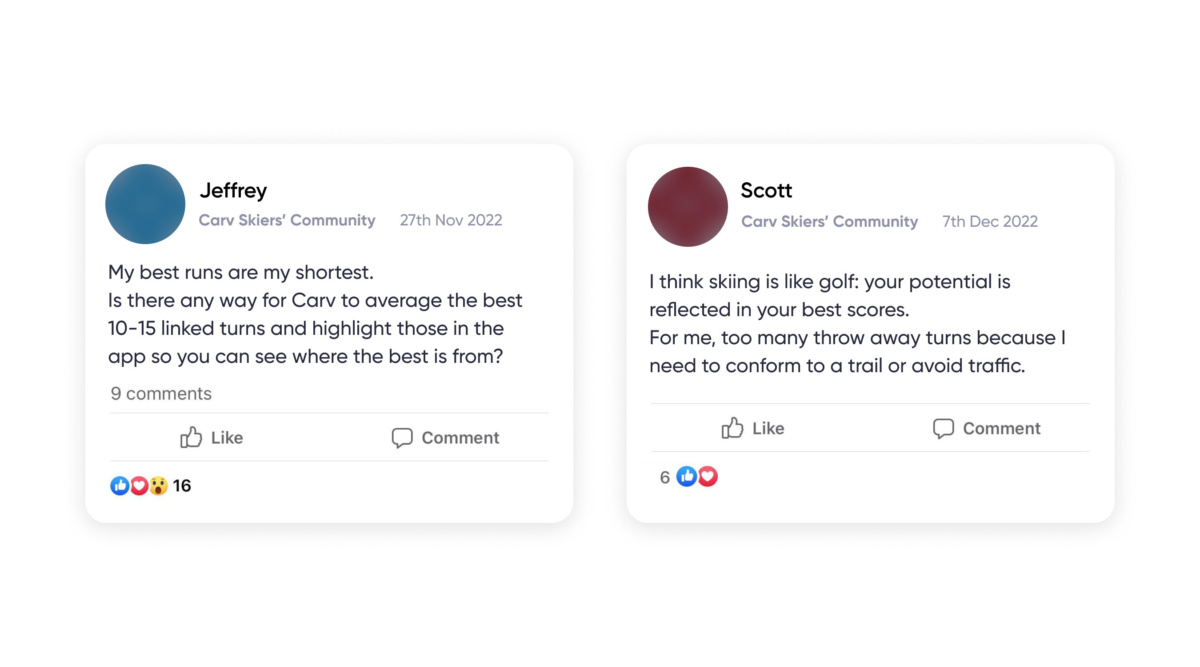
We've had many requests for a segmentation feature on our Carv Skiers' Community
A: What do you mean by “contextualized”?
D: We’ve made your Ski:IQ more relevant to what you were just skiing. This allows you to assess your scores in their full context, as they happen.
When you stop skiing, and a segment ends, you’ll get your Ski:IQ based on the section you just skied. It’s top of mind - so rather than having to worry about where you were good on a long run with varying conditions, you will know exactly what the score is reflective of.
A: I can imagine this might have an impact on the leaderboard…
D: Short answer - yes. Another point we hear a lot from members is getting a score that really reflects the best of your ability. From more competitive skiers, we often hear they’ll head to a nice groomed run, start recording, hit a few turns at maximum performance, and then get their phones out again to stop. It can be seen as a way to game Carv, but really it’s a lot of bother to get a score that reflects your best skiing.
Segmentation is a much easier way to have some fun aiming for that score, and it provides a more accessible level playing field. We have members all over the world, and not everyone is lucky enough to have long wide groomers to nail a run on - but most people can find a decent segment.

A: When we first spoke about segmentation, you said that it was a step towards an even better Free Ski experience. What did you mean by that - what can Members be looking forward to?
D: We see this as a stepping stone towards a more flexible approach to receiving feedback, which has been highly requested from Free Ski.
Getting your Ski:IQ every time you stop can help you assess and optimize your performance multiple times throughout a run. But imagine if you could get coaching at the same time. Suddenly, your opportunities to improve skyrocket - you’re not waiting for the lift, and trying again on a completely different piste or context - but you’re getting feedback perfectly suited to how you are skiing at that time, for you to make immediate actions seconds later.
We hope to soon be able to offer feedback whenever you stop, making your tips even more relevant and actionable.
And, once we can do that, we create more opportunities for our data set to get smarter and smarter. We’ll be able to take a more granular approach to analyzing your skiing and how you are adapting to feedback, so we can make tips and modes more effective.
A: What were the main challenges to building it?
D: We are very aware that some members may be caught out on the slopes by needing to redownload their data after updating the app. Unfortunately, there is no way around this, as our server needs to process all historical sessions to be segment rather than run based. It’s a big old job, and is a logistically challenging technical process.
A: We highly recommend all members update their app at home, and re-sync all their sessions by reopening the app once it has downloaded.
D: In terms of developing the new interface, finding the right design was also an interesting challenge. Splitting runs into segments generates lots more data (in fact, on average three times the amount) which had the potential to make Carv feel overwhelming. Our designer Sam has done a great job in making sure that it remains approachable.
A: Finally, tell us what you thought when you tried segmentation in testing?
D: I was blown away by how much more useful it was, because I was suddenly able to ski really well, try really hard, and instantly get the reward of a good Ski:IQ to show me the evidence of that. Meanwhile whilst I was skiing casually to the lift and getting a lower Ski:IQ, I was more able to mentally discard it - knowing it wasn’t reflective of my best skiing. And, in the future, it could mean that the feedback I get is more relevant to my skiing as well.
Let us know how you find segmentation on the Carv Skiers Community on Facebook!
